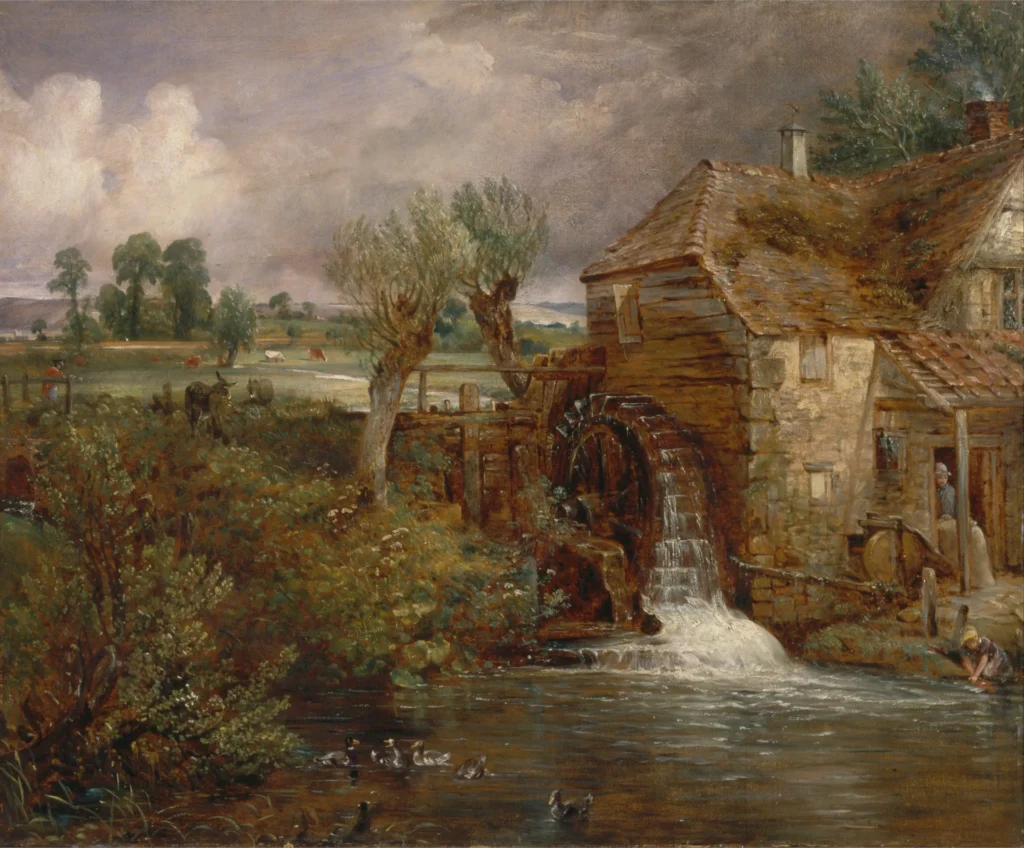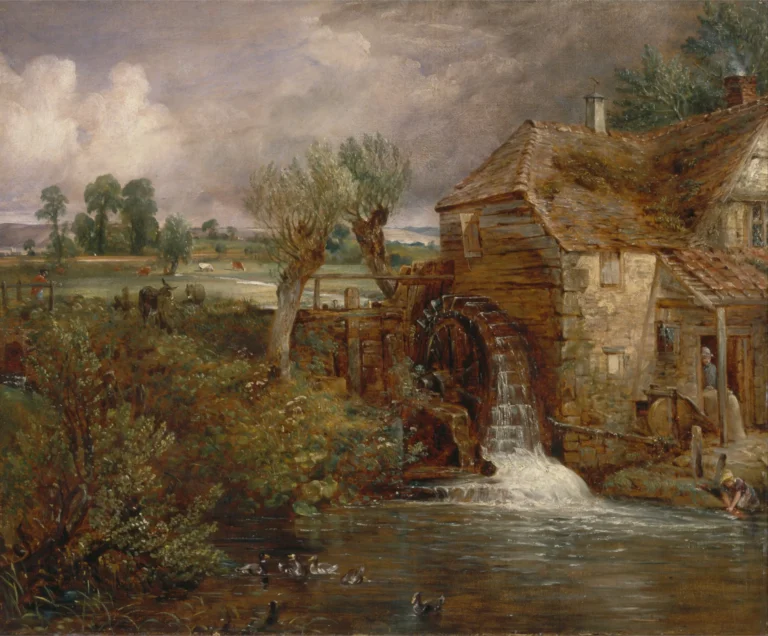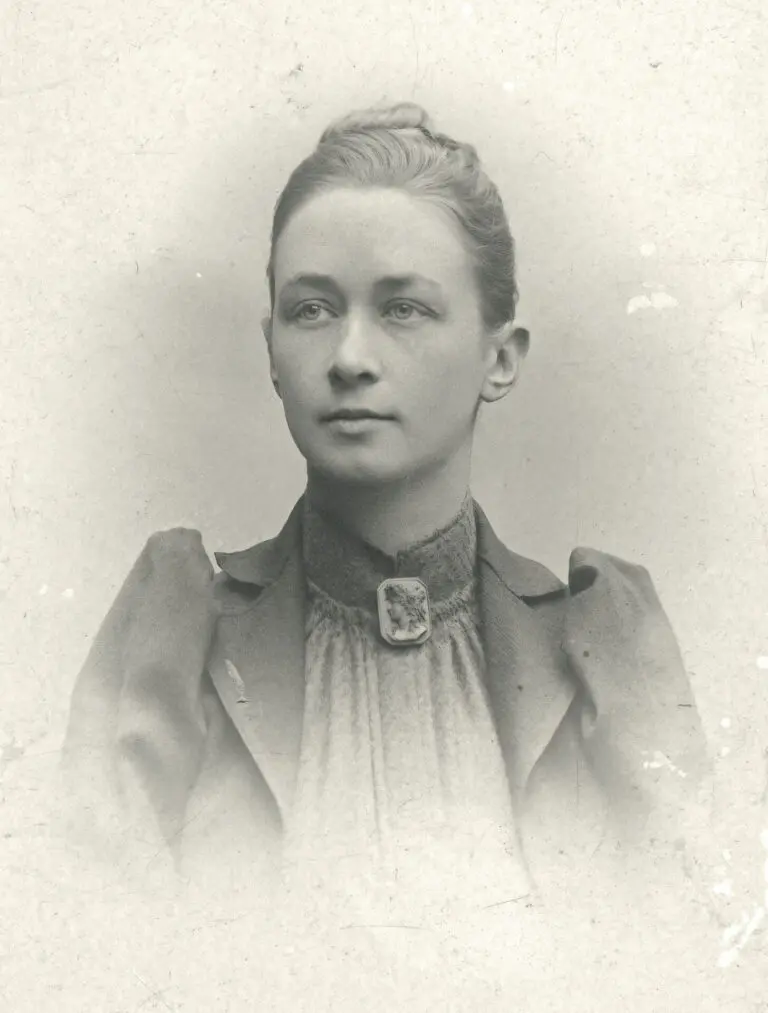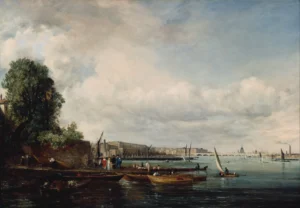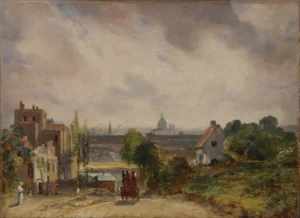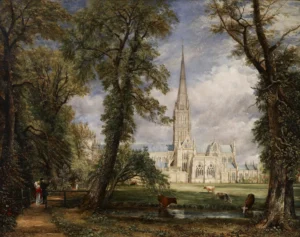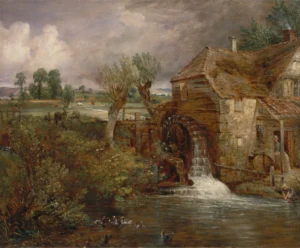Parham Mill, Gillingham
Parham Mill, Gillingham is a painting by renowned English landscape artist John Constable, known for his romantic depictions of rural scenes. Though not widely discussed compared to his iconic pieces like The Hay Wain, this artwork demonstrates Constable's consistent themes of nature and nostalgia. The light and color in the painting evoke a sense of serenity and connection to the English landscape, hallmarks of Constable's genius.
Early 19th Century
About the Artwork
The story behind Parham Mill, Gillingham reflects John Constable's deep appreciation for the agrarian landscape of England. Painted during a time when the Industrial Revolution was changing the rural character of the countryside, Constable’s work serves as a nostalgic reminder of a more pastoral way of life. His meticulous attention to the detail of the mill and surrounding nature showcases his technique of working en plein air, allowing him to capture the true essence of the landscape as he experienced it. Although not as famous as his other works, Parham Mill exemplifies Constable's dedication to portraying the beauty and tranquility of the English countryside, further cementing his legacy as one of the most important landscape painters in art history.
Did You Know
John Constable is celebrated as a pioneer of English landscape painting, with works that reflect the beauty of the natural world. His innovative use of light, color, and texture has influenced generations of artists and continues to be studied in art history.
Constable had a life-long passion for nature and often sought to capture its essence in his paintings. He would frequently paint outdoors, directly observing the landscape to infuse his works with authenticity and vitality.
Many of Constable’s works, including Parham Mill, are deeply rooted in the landscapes of Suffolk and Essex, his home counties. His distinct portrayals not only capture the physical beauty of these areas but also reflect a sentimental longing for the pastoral life.




